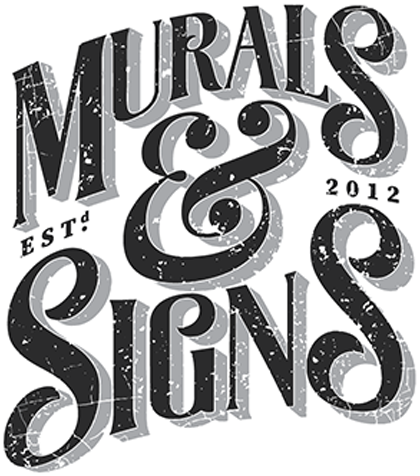In the dynamic world of art and design, the creation of commercial murals has evolved significantly over the years. This article delves into the fascinating realm of commercial murals, exploring the differences between traditional and modern approaches. As businesses seek innovative ways to captivate their audience, understanding these approaches can prove instrumental in making informed decisions about mural projects.
The Allure of Commercial Murals
Commercial murals have become a powerful tool for businesses to establish a unique brand identity, engage customers, and transform physical spaces into immersive experiences. From cafes and restaurants to corporate offices and retail outlets, the impact of a well-executed mural cannot be underestimated.
Traditional Approach
In the traditional approach to creating commercial murals, artists typically employed techniques such as hand-painting, stenciling, and frescoes. These methods have historical roots and have been used for centuries to decorate various architectural structures.
Hand-Painting
Hand-painting, one of the oldest methods, involves the meticulous application of paint directly onto the surface. This technique allows artists to infuse intricate details and a personal touch into their murals, resulting in a sense of authenticity that resonates with viewers.
Stenciling
Stenciling, on the other hand, offers a more controlled approach. Artists create stencils with specific designs, enabling them to replicate patterns accurately across different surfaces. This technique was often utilized for large-scale murals, allowing artists to work more efficiently while maintaining consistency.
Frescoes
Frescoes, a technique traced back to ancient civilizations, involve applying pigments onto wet plaster. As the plaster dries, the pigments become an integral part of the surface. Frescoes have graced the walls of churches and public buildings, showcasing enduring beauty through the ages.
Modern Innovation in Mural Creation
As technology and artistic innovation have progressed, modern approaches to commercial murals have emerged, offering a blend of creativity, efficiency, and longevity.
Digital Projection
Digital projection technology has revolutionized mural creation. Artists can now project intricate designs onto surfaces, guiding their brushstrokes with precision. This approach allows for greater flexibility and experimentation before committing to the final design.
Mixed Media Integration
Modern commercial murals often incorporate mixed media, combining traditional painting techniques with elements like photography, digital art, and even three-dimensional installations. This dynamic fusion results in visually stunning and conceptually rich murals that engage diverse audiences.
Trompe-l’oeil Techniques
Trompe-l’oeil, meaning “deceive the eye” in French, is a technique that creates optical illusions, making two-dimensional paintings appear three-dimensional. This approach adds a layer of depth and intrigue to commercial murals, captivating viewers and sparking conversations.
Considerations for Choosing an Approach
Selecting between traditional and modern approaches to commercial murals depends on various factors, including the desired outcome, budget, timeline, and the story a business aims to convey.
Authenticity and Artistic Touch
For businesses seeking a sense of authenticity and a direct connection with the artist’s hand, the traditional approach of hand-painting or stenciling might be more suitable. These techniques lend a unique charm that resonates with audiences appreciative of craftsmanship.
Technological Precision
Modern approaches, particularly digital projection, offer unparalleled precision, making them ideal for intricate designs and precise logo reproduction. This method can efficiently translate complex concepts onto walls while minimizing the margin of error.
Blending Tradition with Innovation
Choosing a hybrid approach by incorporating traditional techniques with modern elements allows for a harmonious balance between nostalgia and contemporary aesthetics. Mixed media integration and trompe-l’oeil techniques exemplify this synergy, offering visually captivating murals with a touch of artistic heritage.
Longevity and Maintenance
Considering the longevity of the mural is crucial. Traditional murals, like frescoes, have demonstrated their ability to withstand the test of time. However, modern materials, when applied skillfully, can also offer impressive durability.
Traditional Durability
Frescoes, due to their integration with wet plaster, have exhibited remarkable endurance over centuries, making them a symbol of timeless beauty. Businesses looking for a lasting legacy might opt for this traditional technique.
Modern Sealants and Protective Coatings
Modern muralists have access to advanced sealants and coatings that can enhance the longevity of their creations. These protective layers guard against environmental factors, ensuring the mural’s vibrancy remains intact for years.
Conclusion
In the realm of commercial murals, both traditional and modern approaches offer unique advantages. The choice between the two depends on the narrative a business wishes to convey, the aesthetic preferences of the audience, and practical considerations such as budget and timeline. Whether a business opts for the authentic charm of traditional hand-painting or embraces the precision of digital projection, the world of commercial murals continues to evolve, captivating viewers and transforming spaces in unprecedented ways.
Tips for beginners: techniques and materials for commercial murals
